The global baby apparel market size was valued at USD 135.5 billion in 2018. Rising awareness regarding safety and comfort of the baby is projected to be a key factor for the market growth over the forecast period. In addition, parents are focusing not only on easy and convenient baby dressing but also on style in accordance with the latest fashion trends. These consumer trends are anticipated to play a key role in expanding the market scope of various baby apparel variants over the next few years.
The parents are becoming more aware regarding those apparel products, which provide comfort to the baby, along with improving the adaptability of the latter around their surroundings. Additionally, parents as well as baby sitters are more concerned over convenient baby dressing care. They are choosing clothes that do not have any adornments such as buttons or fancy laces that could rip off and lead to any choking hazard, tripping, or any strangling hazard.
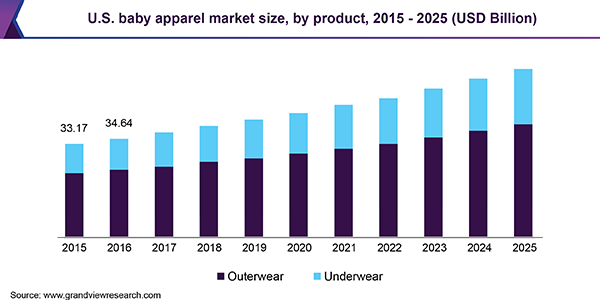
Most of the apparel products are made from synthetic materials, which contain harmful chemical dyes and they lead to cause skin irritation in infants. These consumer trends are expected to expand the market scope of baby apparel, over the forecast period. Government of various countries are regulating the textile industry and framing new policies in order to make baby’s wearing apparel safer. The baby clothes should meet the flame resistant requirements as prescribed by the government for their safety.
For instance, according to the United States Consumer Product Safety Commission, the regulation is established in three different classes of flammability based on the time of flame spread. Class 1 textiles have a flame spread time of more than 7 seconds, which makes themacceptable for use in apparel. Class 2 textiles have a flame spread time from 4 to 7 seconds and it is used to make gloves, footwear, and hats, where flame resistant factor is not required to meet this standards. Class 3 textiles have a flame spread time of less than 3.5 seconds, which makes them unfit for manufacturing baby apparel.
Outerwear baby apparel was the largest product segment, accounting for a share of more than 65.0% in 2018. New parents are focusing on the stylish apparels and cloth wears, which has propelled the demand for the fancy apparel. Moreover, kids fashion shows are increasing across the globe as parents today are getting more aware through internet in order to update the latest fashion for the kids. Various exhibitions are held across the globe in order to promote the kids fashion and launch new fashion especially for kids. For instance, ‘World of Childhood 2020’, a specialized exhibition to launch new products for infants, toddlers, and kids, is going to be held in June 2020 at Yerevan, Armenia.
Underwear baby apparel is expected to expand at the fastest CAGR of 5.8% from 2019 to 2025. Over the past few years, the parents are concerned over the adverse effects on the baby’s health due to presence of harmful chemicals present in the clothes. Sometimes, these clothes lead to skin irritation and many types of health and hygienic problems including rashes. As a result, the parents are expected to increase the spending on those underwear variants, which would provide the protection against bacteria and virus.
The offline distribution channel dominated the global baby apparel market in 2018, accounting for more than 75.0% share of the global revenue. Major retailers including Carter's, Inc.; Cotton On Group; Hennes & Mauritz AB; Gerber Childrenswear LLC; and Naartjie are increasing the penetration of retail stores in order to cater to increasing demand for baby apparel. For instance, as of 2018, Carter's, Inc., one of the largest designers and marketers of kids apparel, had more than 1,000 official stores in North America and more than 17,000 wholesalers in U.S.
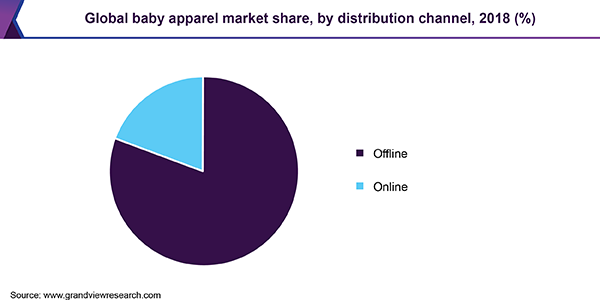
The online channel is expected to expand at the fastest CAGR of 6.1% from 2019 to 2025. With the growing population accessing the internet, the parents are getting more updates of the latest fashion from the social media websites such as Facebook, Instagram, Pinterest, and other media platforms. In addition, continuous promotions of the e-commerce websites such as Flipkart, Amazon, and Alibaba, coupled with great discounts offered by them, are increasing the adoption of online shopping among the parents across the globe. Moreover, this distribution channel provides a platform for the new entrants to the industry to promote and sell their products across the globe irrespective of their geographic boundaries.
North America dominated the global with exceeding 40.0% share of the global revenue in 2018. The region is expected to maintain its lead over the next few years as a result of increased awareness among the U.S.-based working class parents regarding providing safety and hygiene to their babies.
Asia Pacific is expected to expand at the fastest CAGR of 6.7% from 2019 to 2025. Countries such as India and China accounted for the major share as the birth rates in these countries are high as compared to the rest of the world as a result of improved childcare facility in rural and urban areas. This trend is expected to play a crucial role in expanding the scope for baby apparel products.
Middle East and Africa is expected to witness significant growth in the coming years. Urbanization and improvement in economic indicators in terms of rising disposable income and increase in birth rate in African countries including Nigeria, Ethiopia, and Kenya are expected to open new avenues for baby apparel over the next few years.
Key baby apparel manufacturers include Carter's, Inc.; Cotton On Group; Hennes & Mauritz AB; Nike, Inc.; Gymboree Group, Inc.; Industria de Diseño Textil, S.A.; and Naartjie. Major manufacturing firms are adopting several strategies including new product launch and promotion of offline and online sales in order to attract customers. For instance, in October 2018, Carter's, Inc., one of the largest designers and marketers of kids apparel, announced to launch an annual campaign through offline store and e-commerce portals in support of ‘Pajama Program’, a national nonprofit organization that promotes the pajamas as a comforting sleepwear exclusively for babies and young children. Moreover, in November 2018, Carter's, Inc., announced to launch a latest collection of apparels specially designed for premature babies under five pounds.
Copyright © 2020 Grand View Research, Inc. All rights reserved.
 How to Choose the Right Manufacturer for Sustainable Baby Apparel?
How to Choose the Right Manufacturer for Sustainable Baby Apparel?
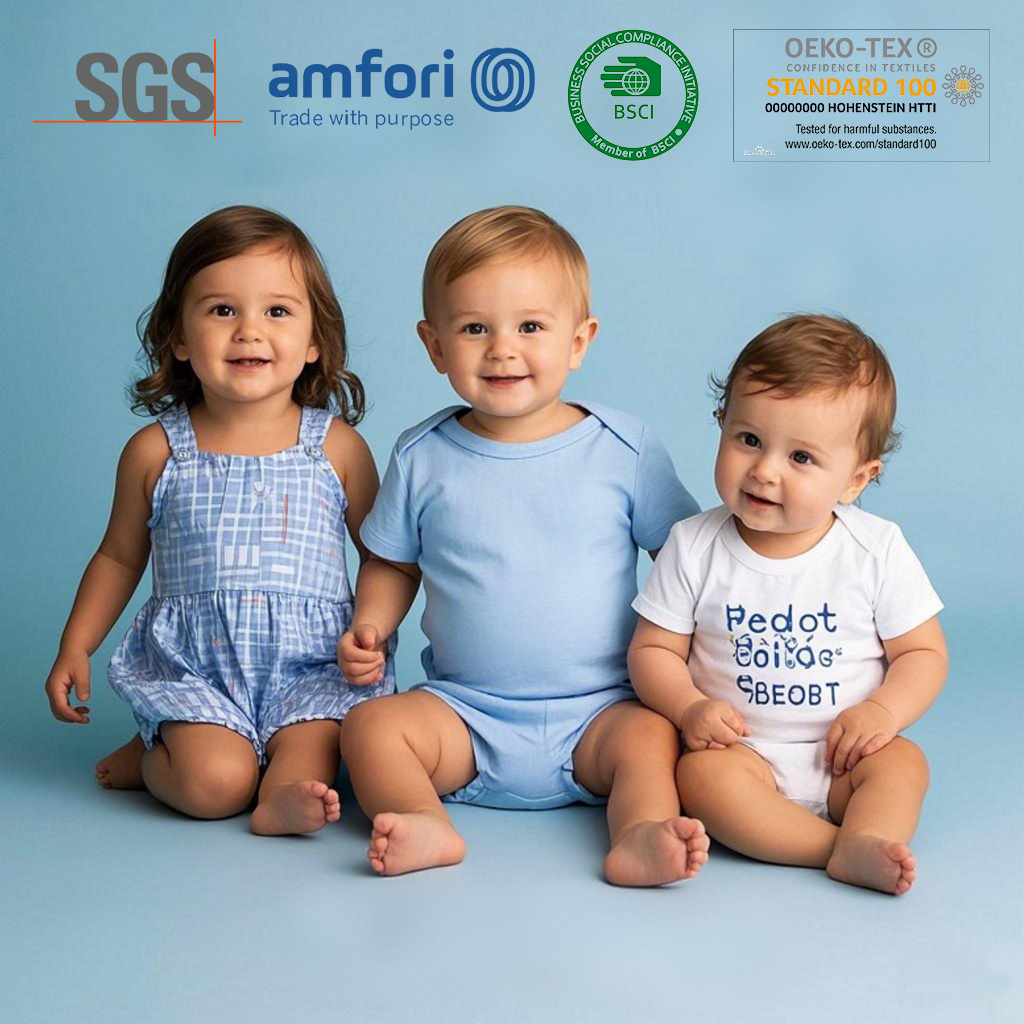 What is a good baby clothing manufacturing company?
What is a good baby clothing manufacturing company?
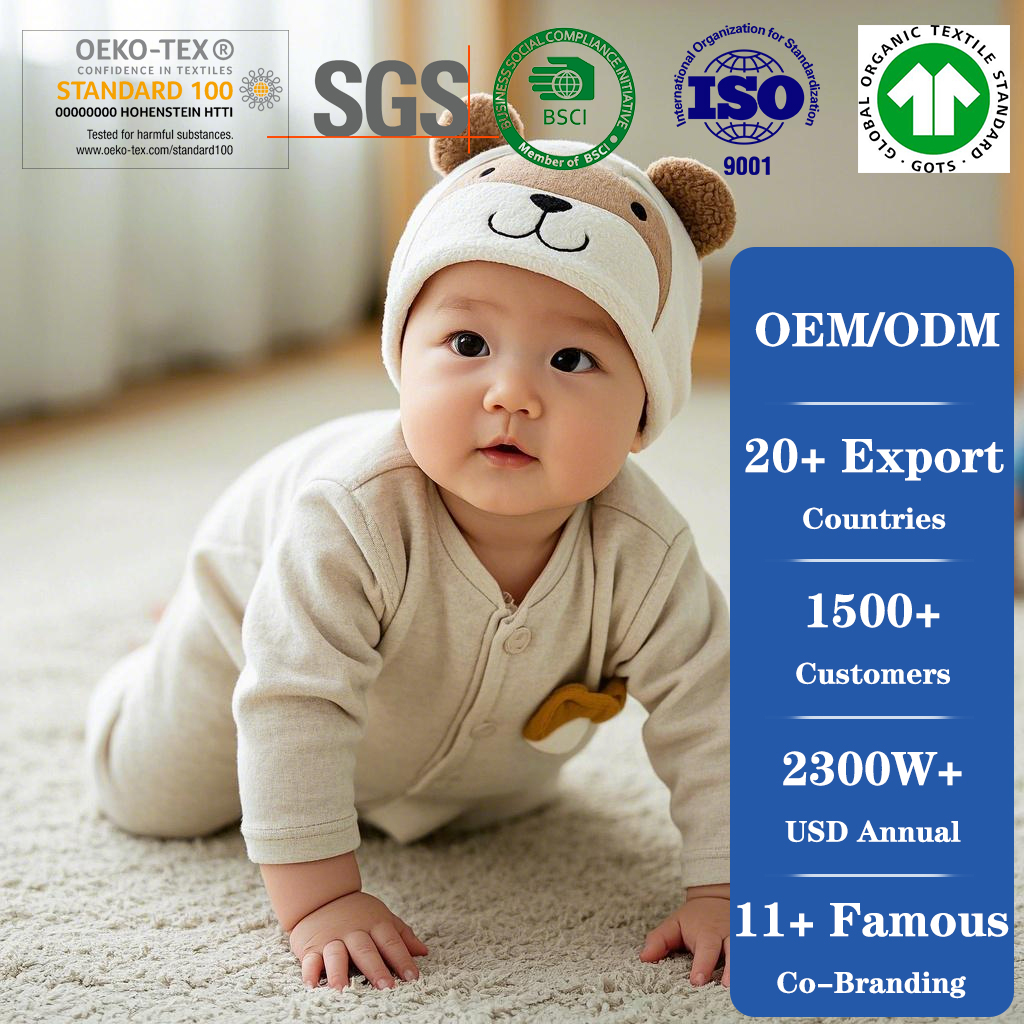 Is Alibaba a good source in finding clothing manufacturers?
Is Alibaba a good source in finding clothing manufacturers?
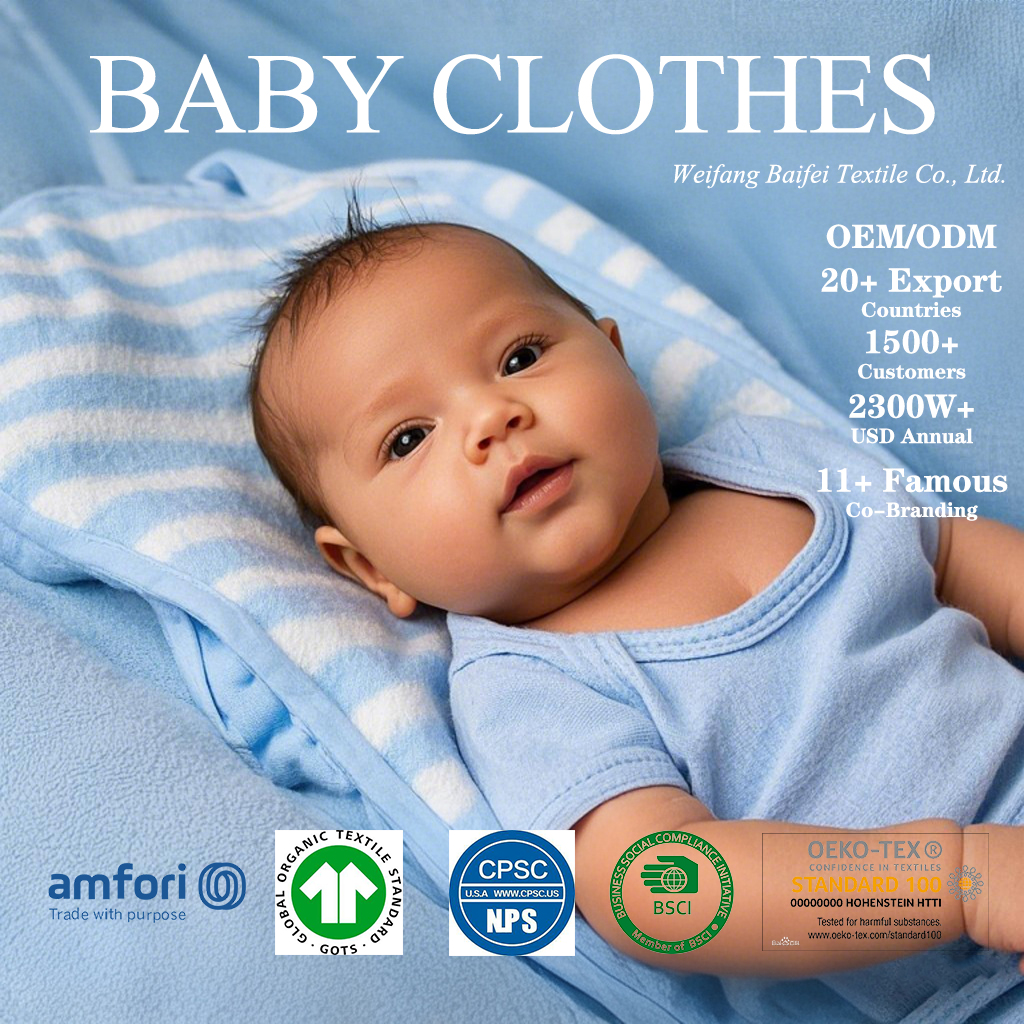 What is the cheapest way to start a baby clothes business?
What is the cheapest way to start a baby clothes business?